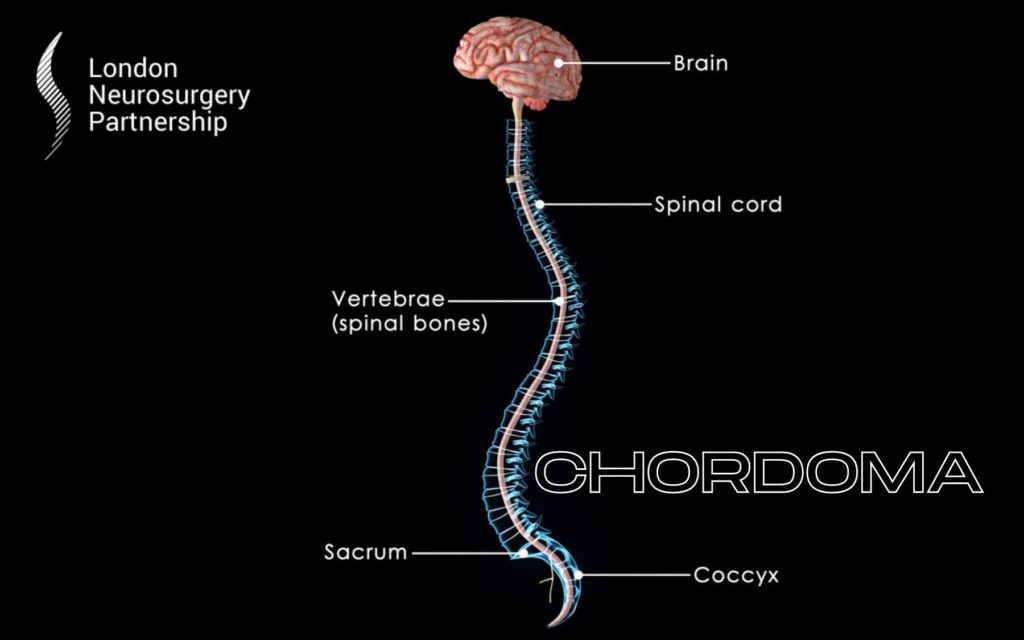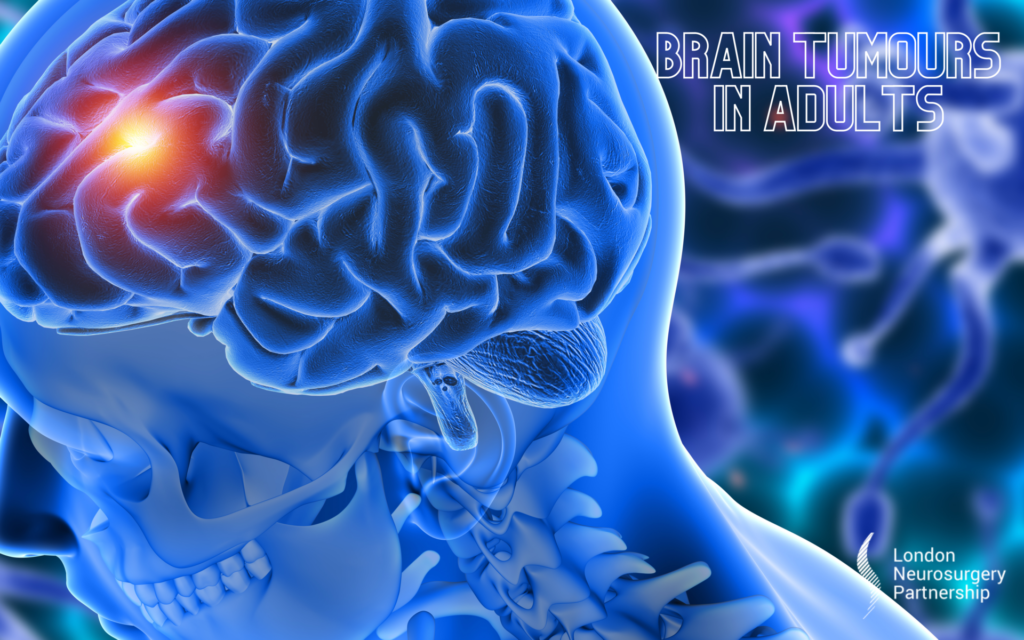
A chordoma is a rare type of cancerous tumour that grows within the skull base and spine. Usually, chordomas are diagnosed in people over 50, although it can affect any one. According to the Chordoma Foundation, just one in one million people per year are diagnosed with this tumour. Mr Nicholas Thomas explains what a chordoma is and the types of treatment available.
Chordomas start in the notochord which helps the development of a growing baby when it is still inside the womb. Only a small amount of notochord cells is left once the bones of the spine have grown. It is those cells that can turn in to chordoma.
This type of cancer can occur anywhere along the spine but in 50 percent of cases the chordoma is usually found in the sacrum.
Symptoms
The symptoms for this type of tumour do depend on where it is growing and what parts of the body it is affecting. Here are some symptoms a patient may experience if the tumour is growing in the spine:
- Pain and numbness
- Radiating back pain to other parts of the body
- Difficulty walking, feeling unsteady or off balance
- Bladder and bowel changes or problems
- Worsening back pain at night
Symptoms if the tumour is in the skull:
- Headache
- Facial pain, tingling or numbness
- Hearing changes
- Feeling dizzy or unsteady
- Double vision
- Changes in hearing
There is no exact cause of chordoma known, research in to this is taking place but so far there are no known environmental or lifestyle causes for this cancer. There have been only a small handful of causes where members of the same family have been affected but it is extremely rare for chordoma to run in families.
Diagnosis
It is important when diagnosing this chordoma that it is with a specialist consultant neurosurgeon, neurologist or team that has had experience with this cancer before. This is because chordoma is easily mistaken for other types of cancer like a schwannoma or other spine or skull-based tumours.
After a consultation discussing in detail your medical history and current signs and symptoms, the best way to diagnose a chordoma is through an MRI scan. A T2 weighted MRI scan will have a specific sequence where it will be able pick up detailed images of your skull and spine and is able to locate this cancer. The MRI scan will be able to see the tumour, tissue surrounding, how it is being affected and further issues. A CT scan can be held in addition to an MRI scan if there is need for clarification.
Depending on where the tumour is, for a true definitive diagnosis, a biopsy will take place where the tissue will be placed under a microscope and examined by a pathologist.
Treatment
Your treatment will depend on three important aspects:
- Age
- General health
- Size and position of your tumour
Sometimes just observation may be needed if the tumour is slow growing and not compressing or causing any harm to the surrounding tissue. The consultant may want to watch and wait if it is small. During this time, regular scans and reviews will be necessary.
Surgery is an option to completely remove or debulk the cancer from the spine or skull. Sometimes the tumour can only be part removed as the risk of further damage outweighs the risk of remaining tumour. Other treatments are available if surgery the chordoma is inoperable or if the surgeon was not able remove the whole tumour, such as radiotherapy.
Radiotherapy is a type of therapy where beams of radiation are directed to destroy the cancer. Chemotherapy is also another type of treatment that kills cancer cells and can be used for patients with chordoma. All treatment will come with side effects, risks, benefits and complications and it is important that the patient completely understands what is happening and why every step of the way.
If you have a chordoma or are worried about your symptoms and would like a consultation please do not hesitate to contact us.
This article is intended to inform and give insight but not treat, diagnose or replace the advice of a doctor. Always seek medical advice with any questions regarding a medical condition.
Back to brain conditions.





0 Comments